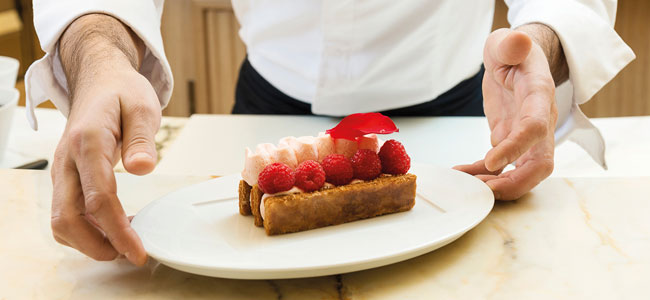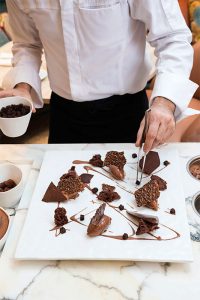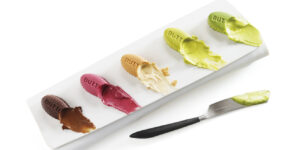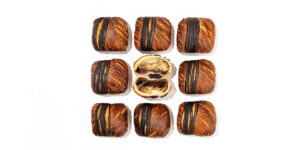Categories Pastry Chef Articles
Pierre Hermé: “We do not eat the picture, we eat the food”
Championnat de France du Dessert Pastry Interviews Pierre Hermé so good #22
Author:
Jaume Cot
TAGS #
Championnat de France du Dessert Pastry Interviews Pierre Hermé so good #22
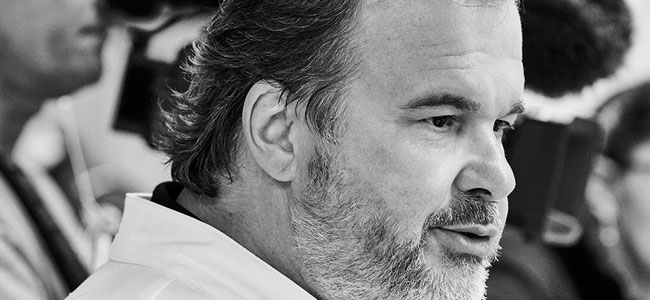
We took advantage of the presidency of Pierre Hermé in the latest edition of the historic Championnat de France du Dessert to learn about the concerns of the great French master regarding the discipline of plated desserts. Restaurant patisserie has a range of peculiarities that differentiate it from the classic store service. For Pierre Hermé there are differences that make it as, if not more interesting than that. In his own words, it is full of opportunities to enrich the perception of its tasting, unlike what happens in the pastry shop. During the interview at so good #22, he also explains his growing interest in recent years to pair the art of coffee with that of pastry, as we are able to appreciate in his openings in Paris such as 86 Champs and his place in the Beaupassage. The father of modern French pastry is driven and constantly evolving, interested in complementary disciplines in pastry, the current concerns of the consumer and investing the time in encouraging the new talents that constantly storm the French pastry scene.
What do you like about the Championnat de France du Dessert that you presided over this year?
I am happy that it is only focused on the plated dessert, that there is no pastry from a shop. It is also the third time that I have presided over the competition -with 40 years of history-, which allows me to see the evolution of the discipline. The level does not stop to grow so much in either the Junior or Senior modes. I think it is very important that we, as pastry chefs, accompany this movement, and that we contribute to making it better, that we feed their creativity and their audacity. Our duty is to offer our experience, transmit our knowledge, our opinions, and thus allow it to progress.
According to Pierre Hermé, what would a perfect plated dessert be?
Creativity must be at the service of taste. Because in the age of Instagram, the appearance can be a very important part in having a nice picture. But we do not eat the picture, we eat the food. Therefore, it is fundamental, when we create a dessert, to think about how the tasting experience will be. All of the elements in a dessert should help to develop the perception of the dessert, its textures and its temperatures. I have recommended the contestants in the competition avoid any needless decoration, and that they should get to the point, to the taste, while still making it beautiful, of course. But ultimately everything in a dessert must be relevant to the taste and pleasure of the tasting.
Do you think that Instagram and social media are causing a problem where chefs are thinking too much about the appearance of the pastry?
For me, this is not a problem in itself, it is just something that we have to take into account. Make it spectacular but stay connected to the flavor. But it is important that when you see a dessert, you find it appealing. You must say: “Oh! I want it, it’s nice”. It is a tug-of-war, flavor and presentation, and you should always keep that in mind.
Is there a plated dessert style that you prefer?
What I like in a dessert is to sink my fork or spoon into it, from top to bottom, and enjoy the entire dessert. I do not like to have to take a bit from here, another one from there, and then to have to decide what the sequence of the tasting is.
“What I like in a dessert is to sink my fork or spoon into it, from top to bottom, and enjoy the entire dessert”
Does a restaurant pastry chef have more freedom than a pastry shop baker?
You do not need to store your creation, you make it and you eat it, so there are many more opportunities to work on the small details. The possibilities are greater.
How are consumers’ current health concerns reflected in using particular ingredients?
They have not been seen during the competition, but I think that in the future, we should take them into account. Because when you go to a restaurant, there are a lot of people who do not want dairy, gluten, or many other things. We must have options for these clients, offer them something different. In the future this will have more and more importance. It is not that we have to transform our pastry shop into a pharmacy, we just give an adequate response to people who want to eat your product with certain particularities.
Is it a challenge is to meet these demands while maintaining the essence of good pastry?
Indeed, that is a challenge. Another challenge is also to learn new techniques and become familiar with ingredients that will allow us to respond satisfactorily to these new demands.
What is modern pastry for you, and what is the difference from the classic, considering your crucial role in the modernization of the pastry?
It has to do precisely with what we were saying before, to meet the demands of society, how to avoid certain ingredients, reduce the amount of sugar, sweetness, but to get an excellent product. That is also modern pastry.
How do you see the new generation of French pastry chefs?
I see a lot of great talent. This makes me very happy, to see that new generations of professionals with great talent are emerging. It’s what you would expect as a recognized pastry chef. And this is another reason to participate in the Championnat de France du Dessert, see these new talents and encourage them to move forward.
“It’s not that we have to transform our pastry shop into a pharmacy, we just have to give an adequate response to people who want to eat your product with certain particularities”
What is Pierre Hermé most interested in lately?
I am very attracted to all of the combinations that may exist between the world of coffee and that of pastry. Actually, I think they have a lot in common with each other. A barista works in a similar way to a pastry chef. They need to measure everything, they are very precise, and I find it very interesting to work with them and find new recipes that can make sense in that context. I’ve been working in this direction for two years, and you can see the influence in my most of recent openings.
Check out this recipe in sogood #22!
